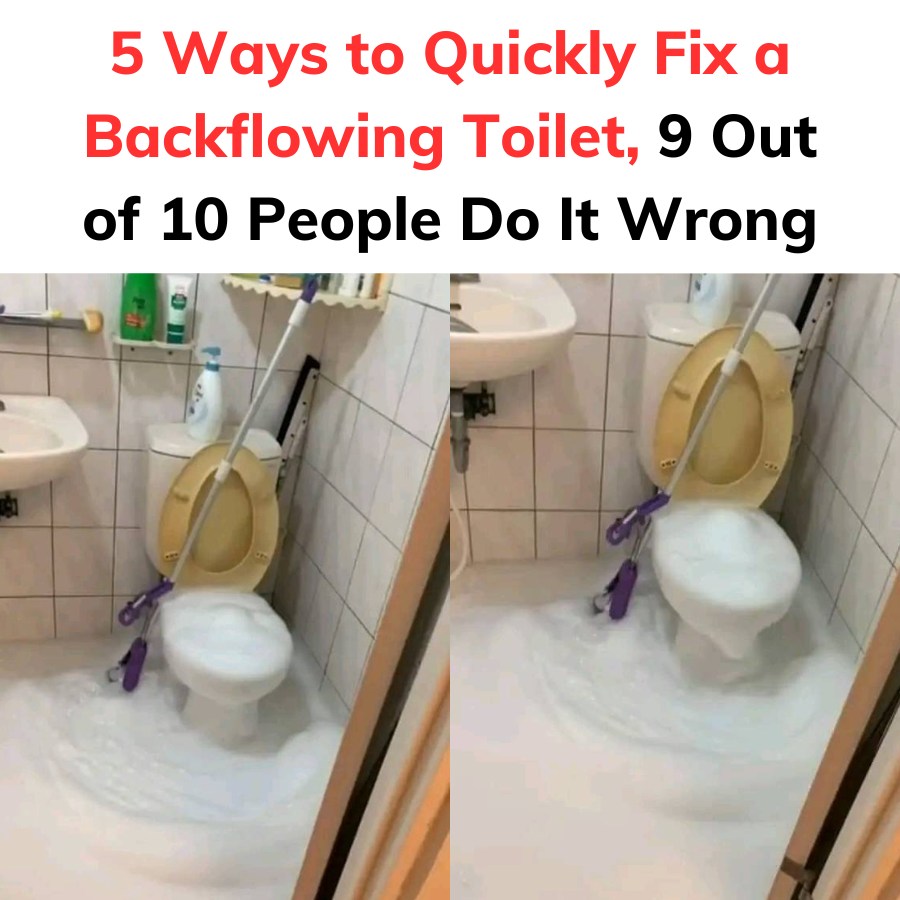
Common Causes of Toilet Backflow
Understanding the reasons behind toilet backflow is essential for determining the best solution. Most causes fall into two categories: improper usage and plumbing system issues. By identifying the underlying problem, you can take the right steps to address it effectively.
1. Clogs from Objects or Debris
Small objects, food particles, and hair often end up in toilets by accident. Flushing these items instead of removing them can block the drainpipe, leading to backflow.
2. Excessive Toilet Paper Usage
Overusing toilet paper is a frequent cause of backflow. Many people assume all toilet paper dissolves easily in water, but thicker or non-dissolvable types can create stubborn blockages.
3. Ventilation System Issues
A clogged or poorly designed plumbing ventilation system can trap gas in the pipes, increasing pressure. This pressure forces water back into the toilet bowl, causing backflow.
4. Clogged Drainpipes
Over time, dirt, grease, and residue build up inside drainpipes, narrowing their diameter. Without regular maintenance, these blockages can result in water backflowing into the toilet.
5. Full Septic Tank
A full septic tank is one of the most severe causes of backflow. When the tank is full, waste and water cannot flow downward, causing the contents to rise back into the toilet. Immediate professional assistance is required in such cases.
5 Ways to Fix a Backflowing Toilet
Once you identify the likely cause, you can try one of these five methods to resolve the issue effectively.
1. Use a Drain Cleaner
A drain cleaner is an excellent tool for clearing deep clogs in the drainage system. If you don’t already own one, you can purchase it at a hardware or home improvement store. To use it, insert the wire into the toilet drain and rotate it. This motion breaks apart solid objects and scrapes dirt from the pipe walls. After about 15 minutes of cleaning, flush the toilet to check if the blockage has cleared.
2. Dishwashing Liquid and Warm Water
Dishwashing liquid provides an unexpected yet effective solution for minor clogs. Pour a few drops of dish soap into the toilet bowl, followed by warm water (avoid boiling water to prevent cracking the ceramic). Let the mixture sit for a few minutes to loosen grease or debris. Flush the toilet afterward to see if the blockage is resolved.
3. Baking Soda and Vinegar
Baking soda is a household staple with powerful cleaning properties. To unclog your toilet, pour a generous amount of baking soda into the bowl, then add vinegar or Coca-Cola to create a bubbling reaction. Allow the mixture to sit for 10–20 minutes, then add warm water and wait another 20 minutes. Finally, flush the toilet to remove the blockage. This eco-friendly method effectively dissolves clogs without harsh chemicals.
4. Ice Water for Added Pressure
Using ice water is another creative way to fix a backflowing toilet. Pour a large amount of crushed ice into the toilet bowl, then flush. The weight and pressure from the ice water help push debris down the drain. As the ice melts, it clears away any remaining obstructions, allowing the toilet to function properly again.
5. The Trusty Plunger
A plunger remains one of the most reliable tools for fixing toilet backflow. Before starting, pour a bucket of water into the toilet to ensure a proper seal. Position the plunger over the drain and push and pull vigorously to create suction and pressure. This motion should dislodge blockages, allowing water to flow freely. Flush the toilet afterward to confirm the issue has been resolved.
Preventing Future Toilet Backflow
Fixing a backflowing toilet is only part of the solution; taking preventative measures ensures you avoid similar issues in the future. A few simple steps can save you time, money, and frustration.
- Dispose of Items Properly: Only flush human waste and toilet paper. Non-flushable items like wet wipes, sanitary products, and paper towels should always be thrown in the trash.
- Perform Regular Maintenance: Periodically clean your toilet and pipes using a baking soda and vinegar mixture to prevent buildup.
- Monitor the Septic Tank: If your home has a septic system, schedule regular inspections and empty the tank as needed. A full tank can lead to costly repairs and serious backflow issues.
- Maintain Ventilation Pipes: Ensure the plumbing ventilation system remains clear of obstructions such as leaves or debris. Proper airflow is essential for optimal drainage.
Conclusion
Dealing with a backflowing toilet is undoubtedly frustrating, but with quick action and the right tools, it can be resolved efficiently. Whether you rely on a drain cleaner, dishwashing liquid, baking soda, or a plunger, these methods address most common causes of backflow. More importantly, adopting good habits and performing regular maintenance can significantly reduce the chances of encountering this issue again. The next time your toilet backflows, you’ll know exactly how to fix it—and how to prevent it from happening in the future.